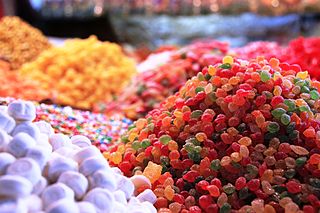Most Kiwis understand that sweets are an occasional treat, even if our perceptions have been stretched until we think that ‘treats’ happen every day. However, one of the more insidious developments in the marketing of sweets in recent years is the growth of ‘fruit’ lollies and roll-ups.
According to World Health Organisation, Kiwis eat more sugar than is good for us. The top three sources of sugar in our diet are fruit, juices and soft drinks, and sweets (including sugar, spreads and confectionary). Thanks to the watchful eye of their parents, most Kiwi kids have a pretty good diet until they hit seven years, whereupon things start to go rapidly downhill. As kids get more freedom and money to make their own decisions, their diet deteriorates.[i] Around 20% of the diet of people aged 5-14 years is processed food high in sugar, saturated fat and salt. This is supposed to be the time they are building their bodies for adulthood.
However, fake food merchants have also been making inroads into the parents by making more and more fake food that appears to be healthy. Fruit lollies and roll ups are a great example of this. Much as we saw with our article on juice, these creations are so processed that there is little to separate them from cane sugar.
Sure enough, this trick is used by the Natural Confectionary Company (owned by Cadbury Schweppes) to make their snacks appear healthier than they are. They are advertised as being made with fruit juice, 99% fat free and having no artificial colourings and flavourings. All of this is perfectly true, but none of it makes their product better than most sweets. The major ingredients in their snakes are glucose syrup, cane sugar and concentrated fruit juice – all different versions of sugar that your body will barely be able to tell apart.
Roll ups are arguably even worse. We used to worry about comparing apples with oranges, but now we have to contend with comparing apples with oranges in a range of incarnations: fresh, puréed, dried, juiced, tinned or hidden in the highly processed roll-up.
Sure, they are made with real fruit, high in fibre and the new Uncle Toby’s ones even contain less sugar. Firstly forget about the real fruit: by the time the fruit is this processed there won’t be much goodness left. Secondly the fibre: what they don’t tell you is that the fibre is added back in, it is nothing to do with the fruit that is in there. Studies suggest that added fibre (like added vitamins and minerals) seems to act differently to the natural stuff.[ii] We don’t know why; maybe added fibre, vitamins and minerals behave differently from the natural ones, or the natural combinations of nutrients aren’t right to ensure we absorb them, or maybe there are whole groups of important nutrients we haven’t discovered yet. In fact, all of these are possible. Either way, wholefoods are generally better every time. We simply aren’t good enough at food manufacturing to beat Mother Nature’s recipe.
Finally, Uncle Toby’s low sugar claim is achieved by chucking in a load of maltodextrin. This is highly processed wheat or corn where the sugars are broken down to almost act like sugar, but not enough to be classed as sugar. This is a neat trick to make fake foods appeal to the health conscious – a trick picked up by other brands like One Square Meal. Maltodextrin is the main ingredient in Uncle Toby’s fruit roll up. This why they can get away with saying it is 17% sugar, when in fact it is almost 70% carbohydrate. Yet it is not far off sugar in how the body processes it, so the body gets a similar sugar spike it gets from eating sugar. Without a spike of exercise to match the spike of sugar, this will put the body under stress and ultimately be stored as fat.
[i] Ministry of Health. 2003. NZ Food NZ Children: Key results of the 2002 National Children’s Nutrition Survey. Wellington: Ministry of Health.
[ii] Jonnalagadda, S.S.; et al. Putting the Whole Grain Puzzle Together: Health Benefits Associated with Whole Grains—Summary of American Society for Nutrition 2010 Satellite Symposium. Journal of Nutrition Supplement. First published online March 30, 2011; doi:10.3945/jn.110.132944
This blog is part of a series – “The twelve fake foods of Christmas”
We don’t want to get all bah humbug about your Christmas celebrations, after all this is the one time of year you should be able to let your hair down a bit and not feel guilty about it. But it is a good time to highlight some of the fake foods that can cause some damage if we get into the habit of eating them. We’ve particularly targeted the foods that are marketed to us as “healthy” in an effort to get us to eat them every day, when in fact they are complete junk and should be confined solely to the annual Christmas binge.
Other posts:
12 Fake Foods of Christmas no.1: Cereal Killers
12 Fake Foods of Christmas no.2: Low Carb Beer Belly
12 Fake Foods of Christmas no.3: Chip on Your Shoulder
12 Fake Foods of Christmas no.4: Gettin’ Saucey
12 Fake Foods of Christmas no.5: Just Juice?
12 Fake Foods of Christmas no.6: Nothing to make this a Happy Meal

